LGBT+
LGBT stands for lesbian, gay, bisexual and transgender/transsexual people. However, it is recognised that those four letters do not necessarily include all those whose sexuality is not heterosexual, or whose gender identity is not based on a traditional gender binary.
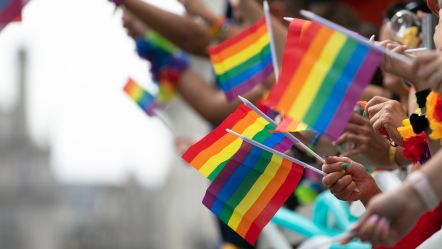
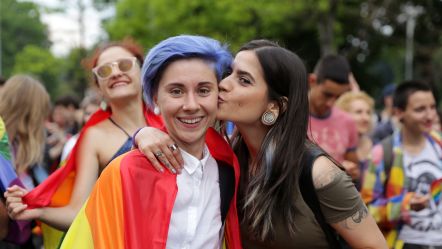
Sexual orientations and gender identities
There is often confusion about what sexual orientation is, and how it is linked to gender identity.
Sexual orientation describes patterns of emotional, romantic and sexual attraction to other people. Traditionally, there are three sexual orientations:
- heterosexual (attraction to people of the opposite sex),
- bisexual (attraction to people of both sexes) and
- homosexual (attraction to people of the same sex).
These three categories are by no means the only labels that describe the variety of sexual identifications. Sexual orientation should be seen on a continuum from heterosexual to homosexual, with many options in between. Furthermore, some people may decide not to identify themselves with a particular sexual orientation.
There are men who have sex with men, or women who have sex with other women, but who do not see themselves as homosexual. They may, at the same time, engage in sexual relationships with people of the opposite sex, but do not want to be identified as bisexual. There is no agreement as to what determines sexual orientation: current research takes into account biological factors, such as genes, brain structure or hormones, as well as other factors, such as environment. Sexual orientation is not a matter of choice or preference and it cannot be altered at will. There are also other terms describing sexual orientation: monosexual (people who feel attracted to people of one gender) or plurisexual (people who are attracted to people of multiple genders).
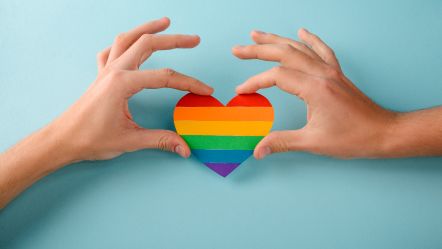
Coming out
LBGT+ people may decide to make their sexual orientation and/or gender identity public. This process is called ‘coming out’ or ‘coming out of the closet’. It usually starts with friends, acquaintances and family members. However, it is not obligatory to come out, and should always be a matter of personal choice whether to tell others, or not: no-one should be forced or pressured to do so. Coming out usually starts with acknowledging one’s own sexual orientation and/or gender identity, and accepting it. LGBT+ people often live in environments that are hostile to people who do not conform to traditional norms. The coming out process can therefore be very painful, and is often associated with risks and fears of being rejected, ridiculed, bullied or even physically attacked. Hiding one’s sexual orientation and/or gender identity and not being able to express one’s own needs for a long time may be a very stressful and frustrating experience. Coming out allows people to overcome these negative feelings, and may lead to an experience of relief for many, especially when the response is positive and accepting. However, it may also be connected with a real risk of rejection or violence.
There are controversies related to the process of coming out. Some LGBT+ movements emphasise the affirmative and positive role that coming out can play: they believe that coming out, especially when done publicly by well-known people, leads to greater acceptance of LGBT+ people in the society. However, many queer theorists believe that this equates to a self-labelling process, whereby someone places themselves within a system of oppression in which sexual orientations other than heterosexual are associated with negative characteristics and meanings.
This reinforces the point that the decision about whether to come out should be a personal one and should follow a process of consideration. The process of coming out is different for everyone, and it can take some time for people to feel comfortable and confident enough to talk about it with other people.
Youth work has an important role to play in supporting young people in their coming out process. If a young person decides to come out to a youth worker close to them, the youth worker should be prepared to listen, to demonstrate empathy and understanding, and to keep an open mind. The young person is sharing something very personal and very important. If a youth worker is uncertain of what to say, or thinks that the young person needs further advice, they should point them to services that provide specific support and counselling to LGBT+ people.
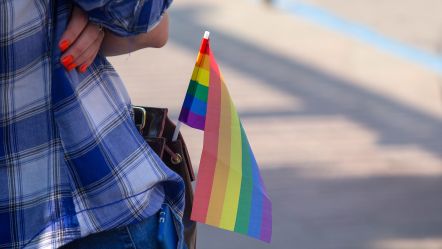
LGBT+ movements
The roots of organised LGBT+ movements can be traced back to the 1920s and 1930s, with the development of an urban gay and lesbian culture59. Homosexual organisations themselves only really began to develop after the Second World War. In the Netherlands, in 1946, gay men - and later lesbian women - got together under the nickname ‘The Shakespeare Club’, and then as an organisation called C.O.C. This stood for the ‘Centre for Culture and Leisure’, a cover name initially adopted after its foundation. C.O.C. is known as the oldest Lesbian, Gay, Bisexual and Transgender organisation in the world.
In the USA, the first attempts to set up a lesbian and gay organisation can be traced back to 1950 in Los Angeles, when a small group of men set up the Mattachine Society. Mostly male in membership, the Society was joined in 1955 by a lesbian organisation based in San Francisco, called the Daughters of Bilitis. In the 1950s, these organisations remained small, but they established chapters in several cities and published magazines that became a beacon of hope for readers.
The beginning of a gay political movement is today often traced back to 27 June 1969, and a raid by the New York City police on a Greenwich Village gay bar, The Stonewall Inn. Contrary to expectations, the patrons of the bar fought back, provoking three nights of rioting in the area, accompanied by the appearance of ‘gay power’ slogans on the buildings. Almost overnight, a massive grassroots gay liberation movement was born. Owing much to the radical protest of African-Americans, women, and anti-war protesters of the 1960s, gays challenged all forms of hostility and punishment which had been meted out by society. Choosing to ‘come out of the closet’ and publicly proclaim their identity, they gave substantial impetus to a wider movement for social change.
In general, the same developments can be seen in Western European countries, where the lesbian and gay world is no longer an underground subculture, but a well-organised community, particularly in larger cities. This often involves gay businesses, political clubs, social service agencies, community centres and religious congregations bringing people together. In a number of places, openly gay candidates run for elections.
In the course of these struggles, homosexual men and lesbian women came to realise that they did not and would not conform to dominant social gender roles. Homosexual people not only challenged the heterosexual norm, but also challenged the images of how men and women should behave, what they should look like and what roles they should fulfil in society. These confrontations with repressive social norms have been carried out in spectacular ways that have increased the visibility of the struggles, such as a ‘kiss–in’ of lesbian women on a German town square. They have also often used traditional political approaches, such as lobbying and advocacy. The presence of publicly ‘out’ lesbians and gays in politics, and organisations as the International Lesbian and Gay Association (ILGA) or the International Gay, Lesbian, Bisexual and Transgender Youth and Students Organisation (IGLYO) have contributed substantially to the inclusion of LGBT issues in discussions on equal opportunities, human rights and general social policy.
Because of the Stonewall riots in June, the month was chosen as LGBT Pride month, when a number of LGBT Pride marches and festivals are organised across the globe (although in some regions, they take place at other times as well). Such festivals and marches are organised not only to promote self-affirmation, dignity, and equality, but have also become an important way to increase the visibility of LGBT+ people and to mainstream the movement.
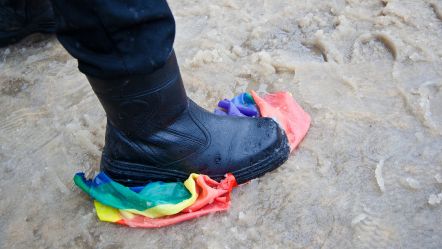
Gender-based violence towards LGBT+ people
Violence against LGBT+ people is often neglected when gender-based violence is discussed. It is not unusual, for example, for perpetrators of violence against LGBT+ people to ‘justify’ their actions by expressing disgust at gay sexuality or gay masculinities. Neglect of gender-based violence against LGBT+ people partly reflects a lack of awareness of such violence , but it is also a consequence of inadequate legal and institutional protections for LGBT+ people in many countries of Europe and in the rest of the world.
Homophobia, biphobia and transphobia are terms that describe a fear, dislike or hatred of lesbian, gay, bisexual and transgender people. Such hatred is usually deeply rooted in stereotypes and prejudices, and supported by a hostile social and political climate towards LGBT+ people. It can take many forms, for example:
- Telling offensive jokes, using banter or words that make fun of LGBT+ people. Sometimes these are told with no malicious intention, but they may still have a negative impact on LGBT+ people.
- Bullying at school, which can take many forms, such as exclusion, violent incidents targeting young LGBT+ people, or threats. Such behaviour often results in young people being frightened, hurt or left out. Furthermore, in some schools the climate may be very hostile towards people who do not conform to traditional gender norms, and may therefore intentionally or unintentionally promote homo-, bi- or transphobia.
- Hate speech and hate crimes: LGBT+ young people frequently experience hate speech, especially on the Internet. This may not necessarily be as a result of personal targeting: they may still be affected when LGBT+ people in general are targeted. Such behaviour can have a devastating impact on the lives of young LGBT+ people: it lowers their self-confidence and sense of selfworth, it hinders their coming out process, it makes them feel alone. There are examples of hate speech targeting LGBT+ people that lead to suicidal attempts. Hate crimes are crimes motivated by prejudice and intolerance, where an offender hurts another person, because of the victim’s actual or perceived ethnicity, national origin, race, sexual orientation, gender identity, religious beliefs, or disability, etc. Hate crimes include assault, harassment, insults, rape, torture, damage to property, or murder.
- Discrimination, such as the exclusion of young LGBT+ people from education or the job market; the absence of gender-neutral toilets for people who do not identify with assigned sex or specific gender; a lack of, or limited access to, medical services; inadequate legislation to allow non-heterosexual couples to enter into legally recognised form of union or partnership, etc.
- Other types of violence, such as forcing gays and lesbians to undergo therapy altering their sexual orientation - procedures which are now banned in many countries
- In some countries, sexual orientation other than heterosexual is illegal and punished, even with death penalty.
Domestic violence in LGBT relationships
Domestic violence in LGBT+ relationships is harder to identify, both for the victims and for the services offering support, because ‘mainstream’ services for domestic violence do not always recognise domestic violence in same sex relationships, and there are few people who are experienced in dealing with its specific aspects. However, statistics show that violence in heterosexual, gay, and lesbian relationships occurs at approximately the same rate (one in four).
The main similarities and differences between same-gender and opposite-gender domestic violence are summarised below60.
Similarities include the form of abuse, the control the perpetrator has over the victim, the isolation the abused may experience, and the dynamics of the ‘cycle of violence’.
Differences include:
Isolation
The isolation that accompanies domestic violence can be compounded by being LGBT+ in a homophobic society. Silence about domestic violence within the LGBT+ community further isolates the victim, giving more power to the abuser. Added to this, is the problem of limited community space within LGBT+ networks: privacy may be difficult to maintain and leaving a relationship may be more difficult.
Heterosexist manipulation
An abuser may threaten to ‘speak out about’ a person’s sexual orientation or gender identity to friends, family, co-workers, or a landlord. In addition to this, existing support services may require an individual to ‘come out’ against his or her will.
Fear of further oppression
As an oppressed and defamed group, the LGBT+ community is often hesitant to address issues that many fear will further ‘stain’ the community.
Gender myths
People assume that two men in a fight must be equals. Similarly, gay, bi- sexual and transgendered (GBT) men often reject the idea that they can be victims. Given social assumptions about ‘deviance’, it might also be assumed that the violence is part of a sadomasochistic relationship.
The context of historical oppression
LGBT+ people often approach shelters, social service agencies, domestic violence service-providers, the police, and the courts with great caution. LGBT+ victims may fear re-victimisation through homophobia, disbelief, rejection and degradation from institutions that have a history of exclusion, hostility and violence toward LGBT people.
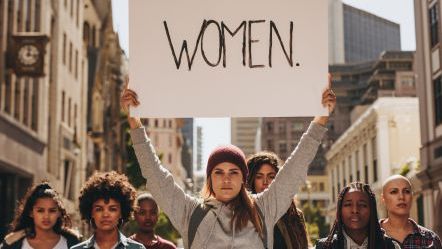
The Human rights framework
It is often claimed that LGBT+ people want ‘special’ rights, such as the right for gay and lesbian people to marry and adopt children. LGBT+ rights are not special rights: they are the same universal human rights that apply to all human beings, regardless of sex, gender, sexual orientation or gender identity.
On 30 March 2010, the Council of Europe Committee of Ministers adopted Recommendation CM/Rec (2010)561, on measures to combat discrimination on grounds of sexual orientation or gender identity. This Recommendation sets out the principles deriving from existing European and international instruments, with particular emphasis on the European Convention of Human Rights and case law from the European Court of Human Rights.
The Recommendation identifies specific measures to be adopted and effectively endorsed by member states to combat discrimination, ensure respect for LGBT persons, promote tolerance towards them, and ensure that victims have access to legal remedies. Such measures include, among others:
- Ensuring effective, prompt and impartial investigations into alleged crimes and other incidents, where the sexual orientation or gender identity of the victim is reasonably suspected to have constituted a motive for the perpetrator
- Taking action in cases of hate speech targeting LGBT+ people
- Guaranteeing freedom of association for LGBT+ people and providing support to LGBT+ organisations
- Repealing any discriminatory legislation criminalising same-sex sexual acts between consenting adults, including any differences with respect to the age of consent for same-sex sexual acts and heterosexual acts
- Implementing mechanisms protecting people from discrimination on grounds of sexual orientation or gender identity in employment and occupation in the public as well as in the private sector.
- Promoting mutual tolerance and respect in schools, regardless of sexual orientation or gender identity
- Encouraging dialogue with, and supporting sports associations and fan clubs, in developing awareness-raising activities regarding discrimination against lesbian, gay, bisexual and transgender persons in sport, and in condemning manifestations of intolerance towards them
- Protecting asylum seekers from discriminatory policies or practices on grounds of sexual orientation or gender identity.
The Parliamentary Assembly of the Council of Europe adopted in 2015 a Resolution on discrimination against transgender people in Europe (Resolution 2048/2015)62, which calls on member States to adopt measures in the areas of anti-discrimination legislation and policies, legal gender recognition, gender reassignment treatment and health care, information, awareness raising and training. It is worth mentioning that in 2015, Malta became the first country in Europe to introduce legislation recognising the right to gender identity. This gave every individual the right to recognition of their gender identity and the right to be treated and identified according to this identity.
The Yogyakarta Principles
The Principles and State Obligations on the Application of International Human Rights Law in Relation to Sexual Orientation, Gender Identity, Gender Expression and Sex Characteristics, known as the Yogyakarta principles, were developed in Yogyakarta (Indonesia) in 2006 by a group of human rights experts from diverse regions and backgrounds.
The document includes recommendations to all countries, as well as to UN bodies, national human rights institutions, the media, non-governmental organisations, and others, to implement human rights standards in relation to LGBT+ people.
The Principles were revised in 2017 to include 10 new principles and are now known as The Yogyakarta Principles+10. These new principles include the right to state protection, the right to legal recognition, or the right to freedom from criminalisation and sanction on the basis of sexual orientation, gender identity, gender expression or sex characteristics.
Although it is not a legally binding document, the Principles have a very important role as they represent “an affirmation of existing international legal standards as they apply to all persons on grounds of their sexual orientation, gender identity, gender expression and sex characteristics. States must comply with these principles both as a legal obligation and as an aspect of their commitment to universal human rights.”63
59 Lentin, A. (2004). ‘The problem of culture and human rights in the response to racism’, in Titley, G. (Ed.) Resituating Culture. Strasbourg: Council of Europe Publishing. For a full discussion see Lentin, A. (2004). Racism and Anti-Racism in Europe. London: Pluto Press.
60 Excerpted from LAMBDA Gay and Lesbian Anti Violence Project (El Paso).
61 Recommendation CM/Rec(2010)5 of the Committee of Ministers to member states on measures to combat discrimination on grounds of sexual orientation or gender identity
62 Resolution 2048 (2015) Discrimination against transgender people in Europe


